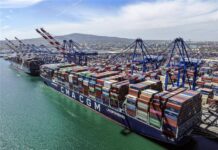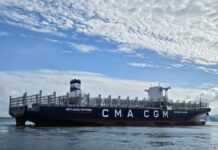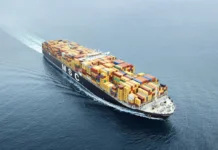
The US and Chinese governments have announced a 90-day de-escalation of the tariffs introduced by both sides in April.
Starting May 14th, the US will reduce its reciprocal tariffs on China from 125% to 10%, which – together with the 10% tariff increases introduced in February and again in March targeting fentanyl flows from China – bring the new baseline to a 30% minimum tariff on all Chinese exports to the US. Goods that were subject to tariffs already in place before President Trump took office this year are still facing those additional duties as well.
China will reduce its April retaliatory tariffs on US exports from 125% to 10% as the parties commit to continued discussions and negotiations toward a new agreement during the three-month pause.
Ocean Freight
The resulting 30% minimum tariff on all Chinese goods is higher than the highest tariffs applied to a more limited list of goods during the first Trump administration. But National Retail Federation US ocean import data show that even when facing a minimum 20% tariff on all Chinese goods in March, US importers continued to frontload inventory ahead of the prospect of even higher tariffs. Volumes in March and April were 11% higher than in 2024 and featured one of the strongest Aprils on record, though some of that growth was from countries other than China, like Vietnam and Thailand.
The 145% tariffs drove a drop of 35% or more in China-US ocean volumes since early April, so we’re likely to see a significant demand rebound in the near term as shippers replenish inventories that may have started to run down in the past month and as many Chinese manufacturers have high levels of finished goods already ready to ship.
With an August deadline for the possible return of higher tariff levels, it is also likely that the near-term ocean demand rebound will mark the start of more frontloading. If so, it would also mark the early start of this year’s peak season, which could end earlier than usual as well for the same reasons.
Even with this de-escalation with China, though, the expected strength of this year’s trans-Pacific ocean peak season is still a matter of debate. Some experts believe that even though transpacific demand was strong under 20% tariffs on Chinese goods, 30% levels may deter some shippers. And, with all the frontloading shippers have already done, some peak season demand may already have been moved, which would also mean more subdued peak season volumes compared to last year.
In terms of container rates, despite the sharp drop in China-US volumes since April, transpacific container rates have remained level at about US$2,300/FEU to the West Coast and US$3,400/FEU to the East Coast, as carriers reduced capacity by an estimated 22% through blank sailings and service suspensions, and by employing smaller vessels on this lane.
Carriers shifted some of that excess trans-Pacific capacity and equipment to other lanes during the April-May pause, and the reduction in sailings over the last few weeks also means fewer empty containers than usual will be making their way back from the US to China in the near term.
So if demand does pick up sharply, shippers may face a period of tight capacity and equipment shortages as volumes rebound and vessels and containers are still being moved back into place. The quick restart could also mean a big bump in the number of vessels and container volumes arriving at US ports in a few weeks. Taken together, shippers could face difficulty securing space and some congestion and delays in the next few weeks at both origins and US destinations. Even if this is the start of peak season, though, it’s likely that this congestion will subside after the initial backlog and imbalances are cleared.
This seasonal demand is coming early, and these possible near-term capacity restraints should drive spot rates up soon. But even with Red Sea diversions still in place, rates are already more than 30% lower than a year ago due to fleet growth and increased competition between the new carrier alliances. Taken together with the possibility that the coming months will see demand rebound but not surge for the reasons noted above, peak season rates may not climb as high as last year’s peaks when rates reached $8,000/FEU to the West Coast and more than $9,800/FEU to the East Coast.
Air Cargo
As part of this interim US-China agreement, the US also adjusted its customs rules for low-value goods from China that, up until May 2, had been entering under the de minimis exemption.
Customs fees for low-value imports arriving by postal service will be reduced from 120% to 54% on May 14. The alternative of a US$100 flat fee per low-value postal shipment remains unchanged, but will not increase to US$200 in June as previously specified. Low-value goods not arriving by postal service will still be ineligible for the de minimis exemption and will be subject to formal entry and full duties – though this tariff level has now dropped from 145% to 30%.
The de minimis pause since May 2 was already leading to reports of sharp drops in China-US e-commerce volumes. But as the vast majority of B2C e-commerce goods from China were moving via freighters often chartered directly by platforms like Temu and Shein, this demand drop is so far reflected mostly in canceled charter flights and not in changes to the spot market.
Author of the Article: Judah Levine, Head of Research at Freightos Group





